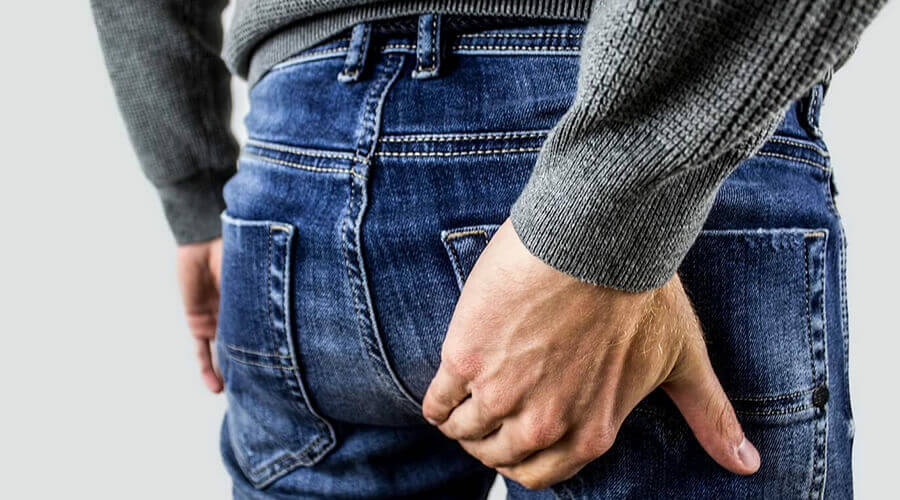
Hemorrhoids cone are not the only solution to hemorrhoids!
Haemorrhoids are now almost a disease of civilisation. It is a common result of a lot of sitting or standing in one sitting or standing position. Of course, it can also be caused by other things, such as poor diet, excess weight, regular constipation and childbirth.
The gold problem can be basically divided into two parts. External and internal hemorrhoids. External hemorrhoids develop outside the anus and are therefore visible and palpable. In contrast, internal hemorrhoids develop inside the anus and are therefore neither visible nor palpable.
External haemorrhoids
External haemorrhoids develop in the area under the anal sphincter. It occurs as a painful swelling around the anus. External haemorrhoids are much less common than internal haemorrhoids.
Because the area around the anus is richly infused with nerves, haemorrhoids are felt and painful from the start.
This type of haemorrhoids is less prone to bleeding because the epithelial cells of the covering skin protect it from rupturing.

Internal haemorrhoids
The internal haemorrhoid is located in the inner wall of the rectum and is not visible from the outside. It is the most common type of haemorrhoids. It can be divided into four stages.
I. the patient is asymptomatic for a long time.
II. the haemorrhoids bleed and sometimes break out.
III. the haemorrhoids fall out, but can still be put back by hand.
IV. the haemorrhoids can no longer be reinserted.
It is important to know that even though the internal haemorrhoids have turned inside out, i.e. fallen out at the anus, they are still internal haemorrhoids.

However, there are also cases where both the external and internal haemorrhoids are present, this is known as the composite or intermediate type.
In order to know for sure what you are dealing with, it is worth looking at the symptoms above or consulting your doctor.
What is the solution for haemorrhoids?
Once we’ve identified the type of haemorrhoids you have, we can start the treatment. Unfortunately, there is no quick fix for haemorrhoids. Treatment depends on the type of haemorrhoids and how far advanced they are.
Hemorrhoids cone:
The hemorrhoid suppository is a very unpleasant but often effective method. Its effectiveness is due to its topical application and the right amount of active ingredients. It contains only enough active ingredients to treat the hemorrhoids, so it has less effect on other organs. However, it is important to know that the hemorrhoid suppository is usually used to treat internal hemorrhoids. In the case of prolapsed hemorrhoids, the internal hemorrhoids should be gently pushed back inside the anus. If you consult your doctor, he or she will be able to recommend a suitable method for this and can also help you choose the best hemorrhoid suppository for you.
Can bleeding hemorrhoids be treated with a suppository?
The suppositories that can be used include preparations containing a local anaesthetic, corticosteroid, anti-inflammatory, anti-haemorrhagic or other active ingredients. In more severe cases, the choice of treatment for haemorrhoids with a haemorrhoid suppository should be a medical decision.
Nevertheless, hemorrhoids suppositories are available without a prescription, the main reason being that they are very treatable with internal hemorrhoids suppositories. It is often used for mild symptoms.
However, it is also important to note that over-the-counter suppositories may not always help. Unfortunately, there are some conditions for which it is important to seek medical advice and to take prescribed medicines and suppositories. Steroidal haemorrhoid suppositories are only available with a prescription.
Fortunately, there are now many over-the-counter hemorrhoid creams that can effectively reduce swelling and reduce pain and itching. However, it is important to know that these creams are usually only suitable for treating external hemorrhoids. However, they are much easier and more pleasant to use than suppositories.
Of course, these preparations are only intended to relieve symptoms and possibly provide a temporary solution. In more severe cases, surgery may be an option. However, the real help can come from a carefully managed and implemented lifestyle.

